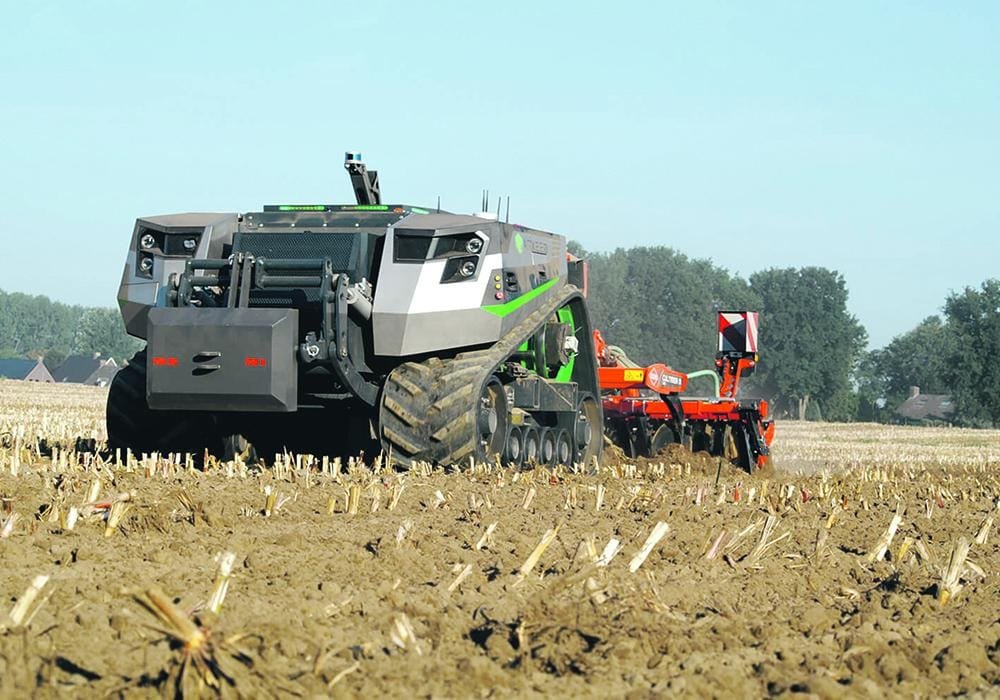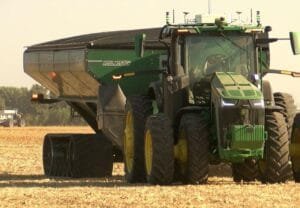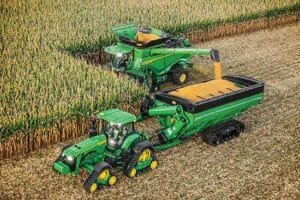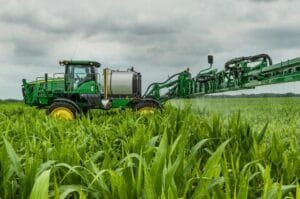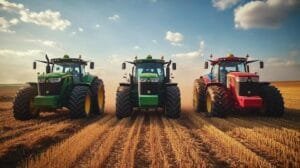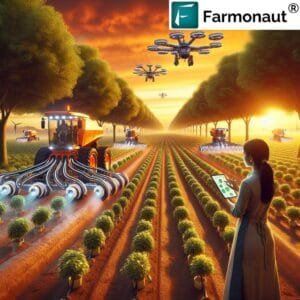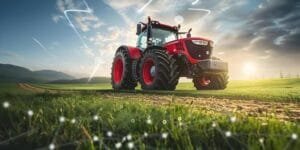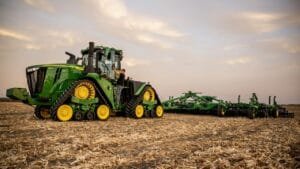: Steering Agriculture’s New Epoch
Visitors drifting between iridescent booths at the bustling CES 2025 technology expo may have noticed the extraordinary presence of hulking, driverless machinery-autonomous tractors poised to redefine how society cultivates its nourishment. In a world swept by swift declines in available farm labor and a persistent hunger for efficiency, these mechanical titans appeared not as novelties but as timely answers to agriculture’s most stubborn conundrums.
John Deere, an industrial vanguard never shy about tinkering with tradition, commanded attention with more than one debut. The E-Power electric tractor quietly shimmered beneath the exhibition lights. Boasting a continuous output equivalent to 130 horses-and powered entirely by battery-the prototype was less brute force, more fleet-footed giant prepared for orchards where precision sometimes outweighs speed. Notably agile in sloping vineyards or tangled vegetable plots, this e-tractor seemed unwilling to make compromises regarding autonomy; developers stressed compatibility with secondary autonomy kits almost from inception.
Seated next to this silent workhorse stood another marvel: the 9RX tractor outfitted with John Deere’s Rev 2 autonomy system-a veritable orchestra of sixteen cameras delivering panoramic awareness and operational independence. Unlike earlier experimental models that required frequent human intervention (and reminders not to accidentally run over weather sensors), these contemporary versions refused such limitations.
Moments before lunch on press day, I overheard an engineer praising Lidar-equipped orchard tractors designed explicitly for tasks like spraying-crucial aspects for any winegrower aiming for healthy canopies yet minimizing chemical excess. By using topographical data usually reserved for civil engineering projects or road mapping apps on outdated smartphones, these machines traced precise routes through groves – seldom doubling back except when intentionally so.
Farmers themselves seemed both curious and unperturbed by these innovations. Russell Maichel-a steady-handed Californian who has harvested almonds since Ronald Reagan captured headlines-confessed his orchard now runs smoother due in part to autonomous technology operating while he ponders crop rotation logistics over breakfast cereal with surprisingly little sugar content these days. While labor savings (30% fewer hours reported across several California operations) breathed new energy into bottom lines being battered elsewhere by unpredictable weather swings and price stagnation typical of staple commodities markets-it is impossible now not see robots championing resilience.
Pausing here-for a moment let’s acknowledge something odd: although many described the automation tech as “driverless,” some insisted operators must still intervene occasionally during rugged terrain crossings lest equipment strays beyond property lines right into neighborly disputes over whose pasture is greener or better irrigated. Unexpectedly then the machine that replaces drivers can also require one nearby just often enough it becomes part of daily routine again-not unlike trading in an old rucksack only discover you miss its pocket full of string.
Theoretically autonomous fleets invite broader questions beyond mechanics alone: Will agricultural academics soon debate if digital telematics platforms possess field sense honed only through decades walking muddy lanes? Or perhaps whether self-learning algorithms spot leaf-spot blight faster than half-asleep humans fumbling notebooks after sunrise? CES chatter hinted strongly that algorithmic intuition advances faster when blended with lived experience-or put differently-“a clever child learns from elders but drags their feet at dawn.”
Punctuating resets throughout CES were soft demonstrations pointing toward sustainability metrics once found solely in annual environmental reports; now machine-read soil moisture analytics divert water supply minute-by-minute without waiting weeks for slow lab analyses previously considered adequate proof points. With such cognitive agility embedded within iron chassis previously known primarily for horsepower wars rather than subtlety-a shifting dynamic emerges wherein tractors think almost ecologically.
Dashing across topics (intentionally so), one technician quietly explained how new cloud-gathered yield estimates integrate seamlessly into insurance claims processing thanks partially overlapping geospatial logics adapted originally from urban delivery routing software-which sounds suspicious until realizing both industries dread uncertainty though rarely admit it aloud unless forced by circumstances considerably outside design specifications.
Whether today’s machines truly eliminate guesswork remains unclear; skepticism lingers whether artificial perception ever fully substitutes hands-in-the-earth insight gleaned under scarlet sunsets stretching far behind furrowed fields visible from nowhere but ground level-or perhaps horizon lines glimpsed briefly atop dusty cabin roofs before thunder sets pigs running wild again against all probability forecasts predicted just yesterday afternoon using last month’s dataset updates.
When reflecting upon CES’ parade of marvels-from battery-powered colossi navigating grape rows solo under Nevada halogen glare-to second-generation autonomy pods resembling robot sentries rather than traditional farm implements-the patchwork impression forms: technology surges forward sideways sometimes chaotically yet inexorably onward nonetheless. Like borrowing notes left scattered across encyclopedias written generations apart-coherence arrives unexpectedly through association rather than strict orderliness; meaning traces itself circuitously between silicon circuits and prairie grass alike.
If there exists any North Star guiding this mechanical revolution it may lie somewhere between persistence bred out stubborn soil…and adaptability cradled within fresh code written late beneath midnight oil-lamps or flickering ceiling LEDs indifferently illuminating cold barns long past work shift end times nobody really chose willingly.

